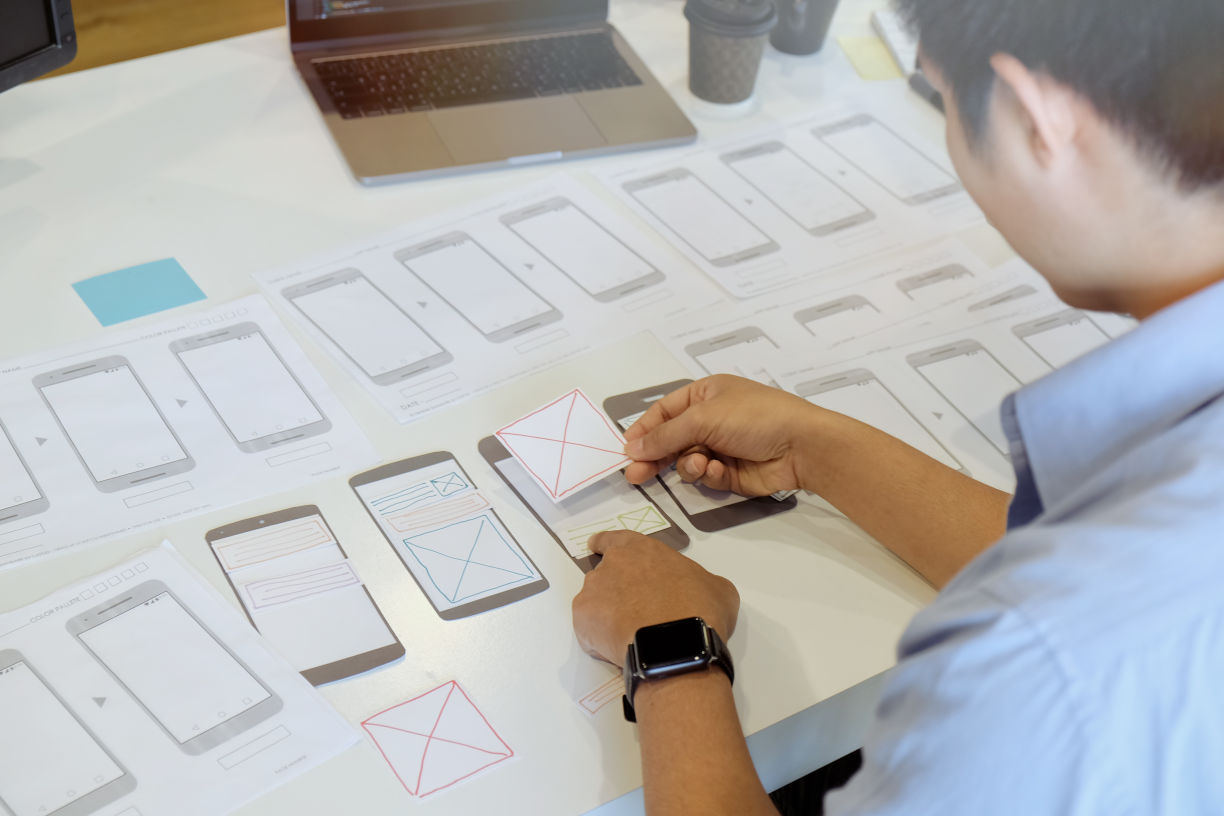# Prototype
# Paper prototypes
- Purpose
- Fast and cost-effective way to visualize the basic structure of an idea or application
- Time required
- From 1 hour to 1 day
- Participants
- Design Thinking team
- Level of experience
- Beginner

# What is it about?
Paper prototypes are a very simple representation of a product concept or an interactive application. The idea is to deliberately work with the simplest means that are easy and cheap to change. They are a type of low-fidelity-Prototypes, usually the level of detail is low. To increase the realism, paper prototypes can also have a higher level of detail. By using several illustrations or superimposing them, interactions can also be represented. Thus, user tests can already be conducted with paper prototypes. However, the focus is not on testing functions, but rather on verifying the concept or idea.
# The goal
A replica of the basic structure of the idea or interactive application on paper, which is used for communication with the team and with users.
# How to do it?
- Identify the elementary features of your product idea.
- Determine the level of abstraction that makes most sense for your prototype. Up to what level are the details of fundamental importance?
- Model your paper prototype using different materials.
- Demonstrate the paper prototype to your users and show them its essential properties.
- Have an open discussion with all team members about chances and potentials.
- Document the results of the discussion and use them in the further development process.
# When do you need it?
Paper prototypes are particularly suitable for the first prototype runs in the project, as they are limited to the elementary features of a product idea.
# Resources
- Paper, scissors, glue
# Advantages
Paper prototypes can be produced quickly and cost-effectively. This enables user tests to be carried out at an early stage of the project. Different variants can also be quickly created, discussed or evaluated. No technical knowledge or additional software is required. Like other visual methods, paper prototypes are usually easier to understand than a textual description of an interaction. They thus serve to generate a common basic understanding within the development team and can prevent comprehension problems.
# Disadvantages
The interaction is not realistic, no system reactions can be shown. Additionally, paper prototypes are unsuitable in some contexts where a high-fidelity prototype is required to capture user experience.
# Keep in mind
Make sure you remain as minimalist as possible and keep the prototype as abstract as possible.
# See also
| Previous methods | Alternative methods | Following methods |
# Sources
- Papierprototyp (German) (opens new window). Institut für Konstruktionstechnik: Technische Universität Braunschweig
- Snyder, C. (2003) Paper Prototyping: The Fast and Easy Way to Design and Refine User Interfaces (opens new window) San Francisco: Morgan Kaufmann Publishers
- Papier-Prototypen - Methodenkarte des Mittelstand 4.0-Kompetenzzentrum Usability (German) (opens new window)
- Vianna, Vianna et al: Design Thinking : Innovation im Unternehmen (German) (opens new window) Logos-Verlag. ISBN: 3832534342
- What is Paper Prototyping? (opens new window) Interaction Design Foundation
← Mock-Ups Role playing →